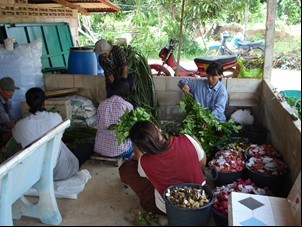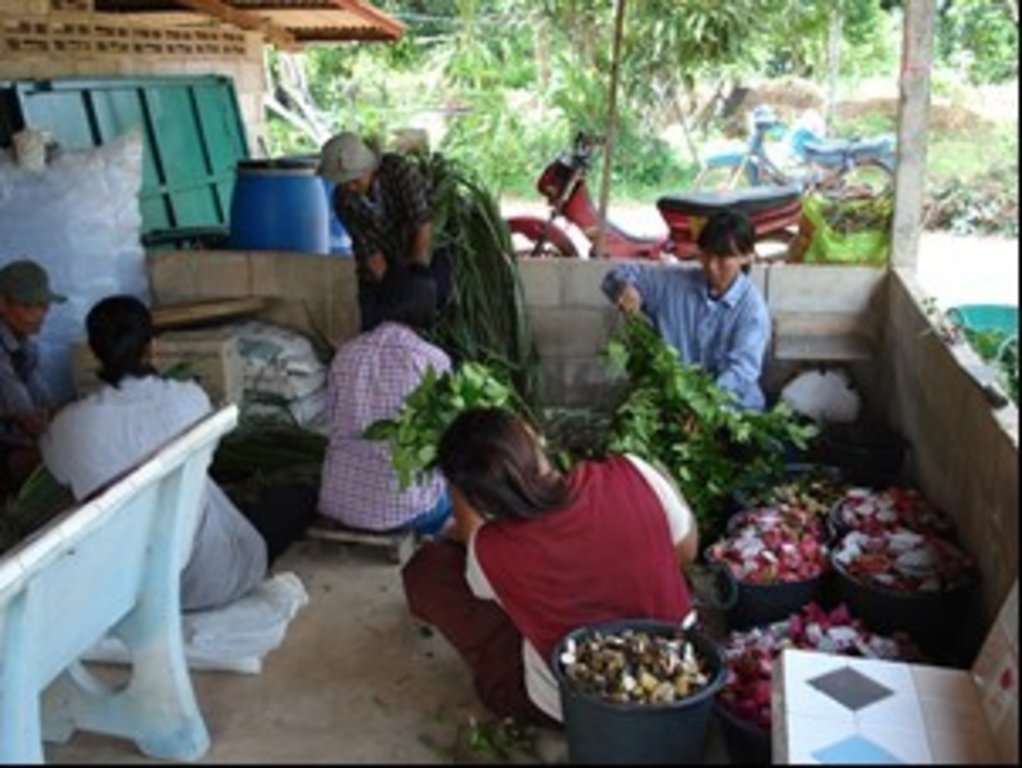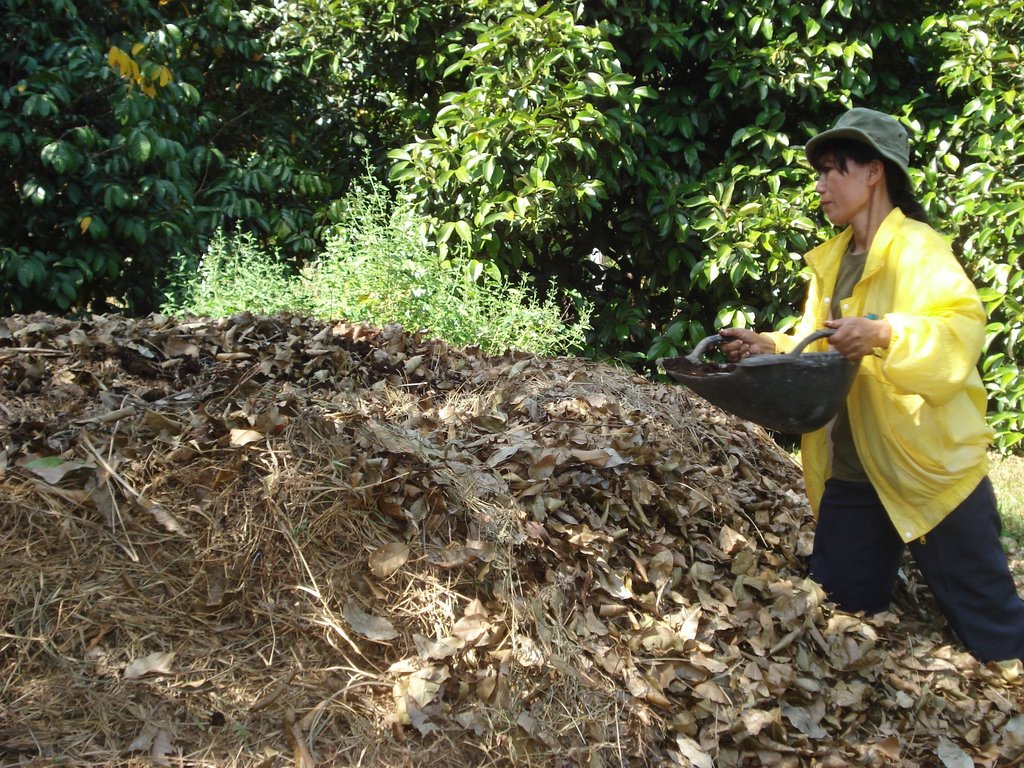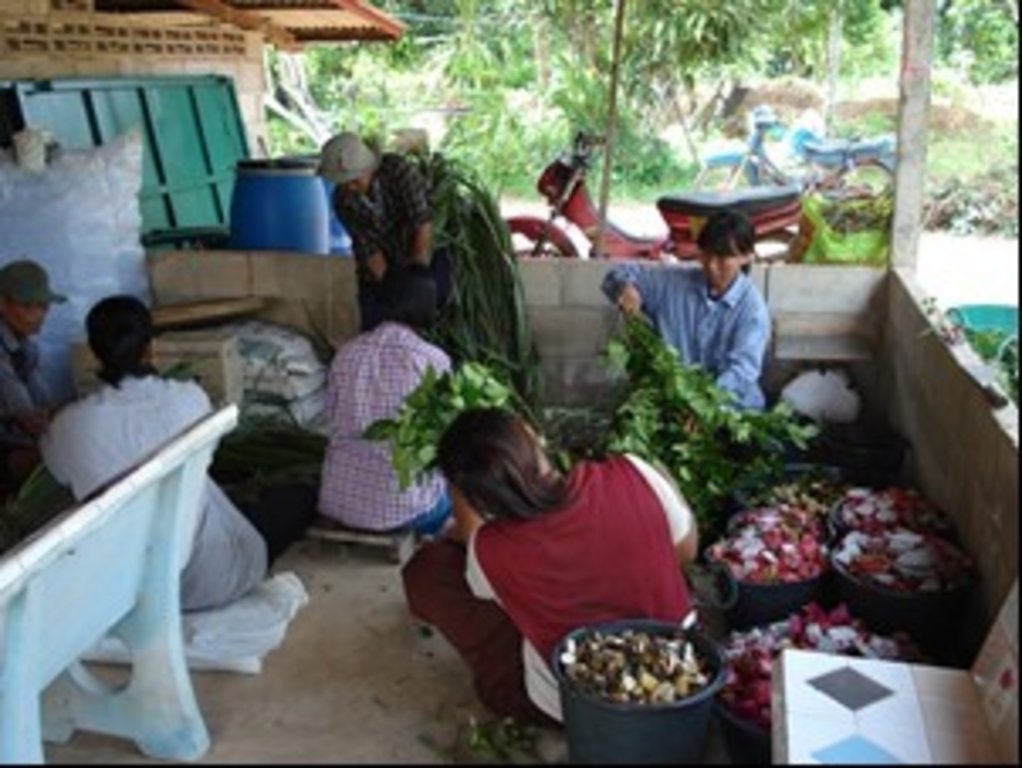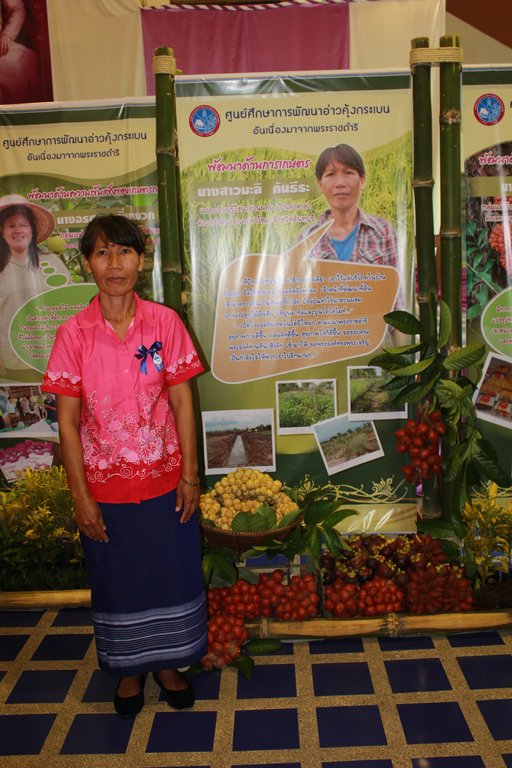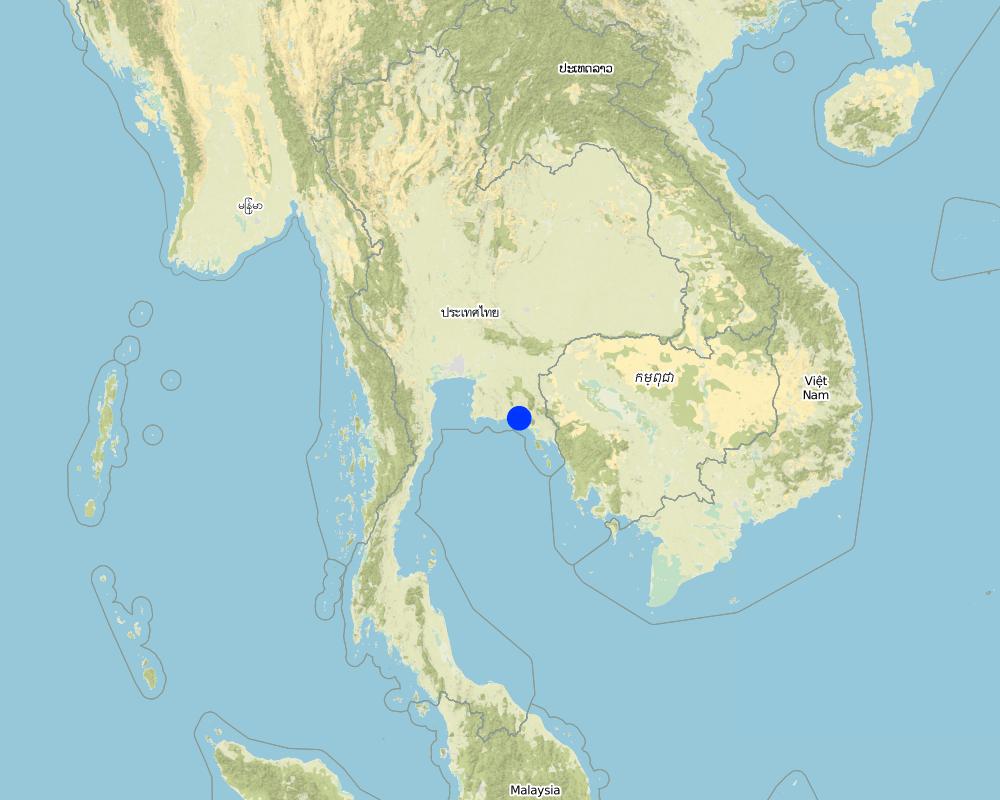Soil Volunteer Doctor Network: a driving force for sustainable land development [Thailand]
- Creation:
- Update:
- Compiler: Kukiat SOITONG
- Editor: –
- Reviewer: Rima Mekdaschi Studer
Mor Din Ar Sa , Soil Volunteers Doctor
approaches_4245 - Thailand
View sections
Expand all Collapse all1. General information
1.2 Contact details of resource persons and institutions involved in the assessment and documentation of the Approach
Key resource person(s)
land user:
Chantasitha Suthat
17/2 Moo 3 Tambon Rampan Thamai District Chantaburi province
Thailand
land user:
Puempak Wanlop
15/5 Moo 3 Tambon Rampan Thamai District Chantaburi province
1.3 Conditions regarding the use of data documented through WOCAT
When were the data compiled (in the field)?
10/10/2018
The compiler and key resource person(s) accept the conditions regarding the use of data documented through WOCAT:
Yes
1.4 Reference(s) to Questionnaire(s) on SLM Technologies
2. Description of the SLM Approach
2.1 Short description of the Approach
The soil volunteers doctor networking at Tam bon Ram Pan, Tamai District, Chantaburi province is a grouping of lead farmers who have been assigned to be soil volunteer doctors ,applied the new theoretical agriculture and Sufficiency Economy Philosophy of His Majesty King Bhumibol Adulyadej (Rama 9). The management of land and water of their own small scale farming land as the concept of the theory is make them get the maximum efficiency and self-reliance.
2.2 Detailed description of the Approach
Detailed description of the Approach:
The soil volunteers doctors are the farmers who coordinate of the land development activities such as consultation and advice on the land management, soil improvement , suitability land use, provided soil test services , Including the activities related to Department of Land Development. Currently, Thailand has more than 80,000 soil volunteers doctors in villages, sub-districts , districts and province ,cover nationwide.
The soil volunteers doctors network is a grouping of the lead and volunteer farmers who have been assigned to be a ”soil doctor” and working together as the networking . This grouping of Soil Doctors is worked together in the networking system as to support each other’s and Land Development Department to achieve the goals set.
The soil volunteer doctors network was aimed to be a forum among soil volunteer doctors and Land development Department working together closely as their set up roles. The facilitation , work connection ,supporting each others among them are the roles of the network.
The soil volunteer doctors network is the network of farmer who have a duties to a soil doctors. They have to facilitate the knowledge exchange , learning and supporting the technology transfer to their communities . The networking structure is cover the nationwide ranking means ,there are the networking at the village level , tambon or subdistrict level, district and provincial level.
The operations of the soil volunteer doctors network are the Land Development Department selected and appointed 80,000 volunteer lead farmers in the village level, covering the whole country to be as soil volunteer Doctors. The Department of Land Development and lead farmers who work as the soil volunteers doctors in the village level will select the representative in the village to be the president in the district level and the president of the district level will choose the representative in the provincial level. President of the soil volunteer doctors at various levels will work together in the network pattern. A knowledge exchange forum for the soil volunteer doctors in each network hierarchy was set up. The network of Soil volunteer doctors in each level will provide information ,news and public relation to their members. The soil volunteer doctors network will provide extension ,promotion and technology transfer to their communities. Land Development Department will provide the training program for soil volunteer doctors. Finally,the monitoring supervising evaluation and reporting will be done by Department of Land Development.
The stakeholders who related to the soil volunteer doctors network are the soil volunteer doctors who applied new theory agricultural and transfer the technology to the farmers, students, university students and anyone who are interested . The farmers, students, university students, the general people and the government officers who come to study and practice in the authentic area. Department of Land Development and the Office of the Royal Development Projects supported material, publication and technical knowledge.
The farmer’s point of view to the benefit of the network are, the Department of Land Development is the main agency for the promotion, help and support the budget production factor Academic Documents and knowledge in the New Theoretical Agriculture. The applied new theoretical agriculture of soil volunteer doctors network focuses on the usage of organic , reduce the use of chemicals to improve soil and environment resources
However, The limitation of the networking is the low adoption of the New Theoretical Agriculture because most of the farmers attitude are focus on the profitable concern which the new theoretical agriculture concept is focus on the sufficiency agriculture and self-reliance.
2.3 Photos of the Approach
2.4 Videos of the Approach
Comments, short description:
-
Date:
13/07/2016
Location:
47 Moo3 Tambon RAmpan Thamai District,Chantaburi province
Name of videographer:
LDD
2.5 Country/ region/ locations where the Approach has been applied
Country:
Thailand
Region/ State/ Province:
Chantaburi province
Further specification of location:
47 Moo3 Tambon RAmpan Thamai District,Chantaburi province
Comments:
-
Map
×2.6 Dates of initiation and termination of the Approach
Indicate year of initiation:
2007
If precise year is not known, indicate approximate date when the Approach was initiated:
10-50 years ago
Comments:
-
2.7 Type of Approach
- project/ programme based
2.8 Main aims/ objectives of the Approach
The soil volunteer doctors network was aimed to be a forum among soil volunteer doctors and Land development Department working together closely as their set up roles. The facilitation , work connection ,supporting each others among them are the roles of the network.
2.9 Conditions enabling or hindering implementation of the Technology/ Technologies applied under the Approach
social/ cultural/ religious norms and values
- enabling
thai culture and norm that make they help among each others and the communities as well
availability/ access to financial resources and services
- enabling
there are availability of credit such as BAAC ,Community fund Community saving group กลุ่มแม่บ้าน ที่สามารถให้กู้ยืมได้
- hindering
the credit loan condition is not meet to the farmers qualification ,it make limited to the credit.
institutional setting
- enabling
-
collaboration/ coordination of actors
- enabling
various MOAC agencies integrated in working and support the promotion of the New theoretical Agriculture
legal framework (land tenure, land and water use rights)
- enabling
-
policies
- enabling
there was 5 coordination project to continue the king RAMA the nine initiative theory ,The integration of the agencies to drive the project ,technology transfer ,support /subsidy the inputs ,do the public relation and project monitoring & evaluation
land governance (decision-making, implementation and enforcement)
- enabling
The new theoretical Agriculture is the efficiency land use for small scale farmers ,the technology transfer will make more adopted farmers .and more efficiency use
knowledge about SLM, access to technical support
- enabling
land users gained knowledge on the New Theoretical agriculture,sel sufficiency economy and be able to applied to their farm and life.
Land Development Department supported well digging ,on farm infra structure development. soil test service supported farm inputs provide technical knowledge through Soil Volunteer Doctors Network and Land Development Learning plot Royal project office and various agencies of MOAC supported and promoted the approach
markets (to purchase inputs, sell products) and prices
- enabling
there was a market for organic /safety products. It make more interested for farmers to produced .
- hindering
the crop price was drop off as para rubber
workload, availability of manpower
- hindering
shortage of farm labor ,high cost of labor .They need to use family member or labor pool
3. Participation and roles of stakeholders involved
3.1 Stakeholders involved in the Approach and their roles
- local land users/ local communities
farmer in the community
The New theoretical Agriculture knowledge have been transfer by training ti the target farmers and they change their practice through the concept of the technology as the live with the self sufficiency economy concept which make them more self reliance
- SLM specialists/ agricultural advisers
Land development Department
the Office of the Royal Development Projects
Land development Department
the Office of the Royal Development Projects take the farmers to visit the New theoretical Agriculture demonstration site ,to learn and sharing the experiences
- researchers
researchers from Land development Department
use the farmer field as the field trial to study
-The use of organic acid from bio fermented solution to replace the synthetic formic acid -
-Field trial on the use vetiver grass for moisture keeping,fertility and reduce erosion practice in longong plantation
-Soil acidity management for Dragon fruit cropping
- teachers/ school children/ students
Burapha University students
visiting practice and got the lesson learn and report
- local government
local government
support the center
หน่วยงานทหาร เข้ามาศึกษาดูงาน
-
If several stakeholders were involved, indicate lead agency:
-
3.2 Involvement of local land users/ local communities in the different phases of the Approach
| Involvement of local land users/ local communities | Specify who was involved and describe activities | |
|---|---|---|
| initiation/ motivation | interactive | Land Development Department selected and appointed volunteer lead farmers in the village level, The Department of Land Development and lead farmers who work as the soil volunteers doctors in the village level will select the representative in the village to be the president in the district level |
| planning | interactive | Land Development Department set up the network of Soil Volunteer Doctors at the community or moo ban level as to be the knowledge exchange forum ,technology transfer from the soil doctors to the farmers |
| implementation | interactive | Land Development Department setup the knowledge exchange forum for the soil volunteer doctors in each network hierarchy was set up. The network of Soil volunteer doctors in each level will provide information ,news and public relation to their members. The soil volunteer doctors network will provide extension ,promotion and technology transfer to their communities. Land Development Department will provide the training program for soil volunteer doctors |
| monitoring/ evaluation | interactive | Land development Department do monitoring and evaluation |
| - |
3.3 Flow chart (if available)
Description:
-
Author:
-
3.4 Decision-making on the selection of SLM Technology/ Technologies
Specify who decided on the selection of the Technology/ Technologies to be implemented:
- mainly land users, supported by SLM specialists
Explain:
land users and network got the technology transfer and supported from LDD and the Office of the Royal Development Projects
Specify on what basis decisions were made:
- personal experience and opinions (undocumented)
- supported from Government agencies
4. Technical support, capacity building, and knowledge management
4.1 Capacity building/ training
Was training provided to land users/ other stakeholders?
Yes
Specify who was trained:
- land users
If relevant, specify gender, age, status, ethnicity, etc.
-
Form of training:
- on-the-job
- farmer-to-farmer
- public meetings
Subjects covered:
The New Theoretical Agriculture curriculum content are The king knowledge, The New Theoretical Agriculture concept ,the farm planning ,the production planning ,the cost reduction knowledge ,the income generate knowledge and the household account
Comments:
more knowledge of The New Theoretical Agriculture and the King knowledge
4.2 Advisory service
Do land users have access to an advisory service?
Yes
Specify whether advisory service is provided:
- on land users' fields
Describe/ comments:
The farmer who interested in the New Theoretical Agriculture could visit and learn at the center at the the New Theoretical Agriculture Demonstration plot Ms Mali Khanthira Tambon Ramphan ,Thamai District Chathaburi province phone 065-6903985
4.3 Institution strengthening (organizational development)
Have institutions been established or strengthened through the Approach?
- no
4.4 Monitoring and evaluation
Is monitoring and evaluation part of the Approach?
Yes
Comments:
there are monitoring and evaluation program from the agencies under the MOAC
Comments:
-
4.5 Research
Was research part of the Approach?
No
5. Financing and external material support
5.1 Annual budget for the SLM component of the Approach
If precise annual budget is not known, indicate range:
- < 2,000
Comments (e.g. main sources of funding/ major donors):
Land Developmnt Department
5.2 Financial/ material support provided to land users
Did land users receive financial/ material support for implementing the Technology/ Technologies?
Yes
If yes, specify type(s) of support, conditions, and provider(s):
Land development department supported the implement of the New theoretical Agriculture through the financial support,farm inputs .
5.3 Subsidies for specific inputs (including labour)
- agricultural
| Specify which inputs were subsidised | To which extent | Specify subsidies |
|---|---|---|
| seeds | partly financed | 5,000 |
| ปูนโดโลไมท์ ปูนมาร์ล | 50,800 | |
If labour by land users was a substantial input, was it:
- rewarded with other material support
Comments:
Land Development Department supported farm inputs such as marl /lime jack bean seed,Innoculants for compost making /bio fermented solution ,plot sign etc.
5.4 Credit
Was credit provided under the Approach for SLM activities?
Yes
Specify conditions (interest rate, payback, etc.):
-
Specify credit providers:
Community fund ,Saving group for production (member monthly saving 100 baht and they can get loan from that fund)
Specify credit receivers:
Farmer group
5.5 Other incentives or instruments
Were other incentives or instruments used to promote implementation of SLM Technologies?
Yes
If yes, specify:
The NEw Theoretical learning point by the Soil Volunteer Doctor with the Soil Volunteer Doctor Network
6. Impact analysis and concluding statements
6.1 Impacts of the Approach
Did the Approach empower local land users, improve stakeholder participation?
- No
- Yes, little
- Yes, moderately
- Yes, greatly
after applied the new theoretical agriculture ,farmers income was increase (more various crops and farmer grouping
Did the Approach enable evidence-based decision-making?
- No
- Yes, little
- Yes, moderately
- Yes, greatly
farmer change cropping pattern from single crop to integrated crop production moving forwards to self reliance
Did the Approach help land users to implement and maintain SLM Technologies?
- No
- Yes, little
- Yes, moderately
- Yes, greatly
the knowledge sharing to the neighbor farmers make change to them
Did the Approach improve coordination and cost-effective implementation of SLM?
- No
- Yes, little
- Yes, moderately
- Yes, greatly
the Soil volunteer doctor network ,farmer group ,crop processing group and knowledge sharing forum
Did the Approach mobilize/ improve access to financial resources for SLM implementation?
- No
- Yes, little
- Yes, moderately
- Yes, greatly
the networking make it easy to access to finance/credit and community fund ,low interest for agriculture
Did the Approach improve knowledge and capacities of land users to implement SLM?
- No
- Yes, little
- Yes, moderately
- Yes, greatly
public sector provided the training program and technology transfer on the new theoretical agriculture to farmers
Did the Approach improve knowledge and capacities of other stakeholders?
- No
- Yes, little
- Yes, moderately
- Yes, greatly
public sector provided the training program and technology transfer on the new theoretical agriculture to farmers
Did the Approach encourage young people/ the next generation of land users to engage in SLM?
- No
- Yes, little
- Yes, moderately
- Yes, greatly
there was a media distribution on the new theoretical agriculture such as TV and radio program,make new generation getting to know the matter of the new theoretical and adopted
Did the Approach lead to improved food security/ improved nutrition?
- No
- Yes, little
- Yes, moderately
- Yes, greatly
the products of the new theoretical agriculture was organic products ,safety products
Did the Approach improve access to markets?
- No
- Yes, little
- Yes, moderately
- Yes, greatly
various safety farm products ,meet to the market demand
6.2 Main motivation of land users to implement SLM
- increased production
more type of crop production pattern
- increased profit(ability), improved cost-benefit-ratio
more circulate income,farmer have the sufficient economy life.
- reduced land degradation
the products from the new theoretical agriculture are organic products ,restore land degradation
- affiliation to movement/ project/ group/ networks
strengthen the Soil Volunteer Doctor Network
- enhanced SLM knowledge and skills
regularly Practice and field visiting
6.3 Sustainability of Approach activities
Can the land users sustain what has been implemented through the Approach (without external support)?
- yes
If yes, describe how:
the Soil Volunteer Doctor Network applied the concept of the new theoretical agriculture to their farm ,make them more self reliance ,use their own family member power , have the sufficient economy life ,and convey the knowledge /technology to their neighbor farmers.
6.4 Strengths/ advantages of the Approach
| Strengths/ advantages/ opportunities in the land user’s view |
|---|
| farmers have better living ,be able to self reliance |
| Government sector supported the implementation of the new theoretical agriculture approach and the promotion activities of the Soil Volunteer Doctors Network |
| Farmer unity ,love and Strengthen are the effected of Farmer Grouping |
| Strengths/ advantages/ opportunities in the compiler’s or other key resource person’s view |
|---|
| Government agencies is the key organization who supported ,promotion the the new theoretical agriculture |
| the new theoretical agriculture is focus on safety products production ,organic substance ,make use of farm waste recycle as compost bio fermented solution which reduced cost of production |
6.5 Weaknesses/ disadvantages of the Approach and ways of overcoming them
| Weaknesses/ disadvantages/ risks in the land user’s view | How can they be overcome? |
|---|---|
| shortage of labor,costly labor | house hold labor or farm machinery |
| lack of crop production knowledge | explore more knowledge |
| insufficiency of water resources for farming | increase more capacity to keep more water longer such as dig more well -/or underground water ,dredge the natural canal ,pump the water and keep in the farm |
| Weaknesses/ disadvantages/ risks in the compiler’s or other key resource person’s view | How can they be overcome? |
|---|---|
| The limitation of the networking is the low adoption of the New Theoretical Agriculture because most of the farmers attitude are focus on the profitable concern which the new theoretical agriculture concept is focus on the sufficiency agriculture and self-reliance. | awareness raising ,campaign to the new theoretical agriculture concept is focus on the sufficiency agriculture and self-reliance. |
7. References and links
7.1 Methods/ sources of information
- field visits, field surveys
-
- interviews with land users
5
- interviews with SLM specialists/ experts
1
7.2 References to available publications
Title, author, year, ISBN:
-
Available from where? Costs?
-
7.3 Links to relevant information which is available online
Title/ description:
-
URL:
-
Links and modules
Expand all Collapse allLinks
No links
Modules
No modules


